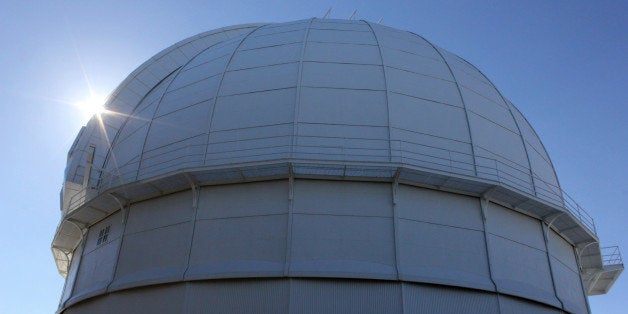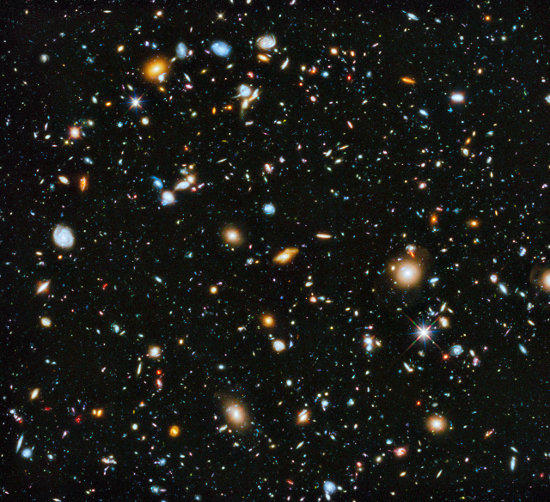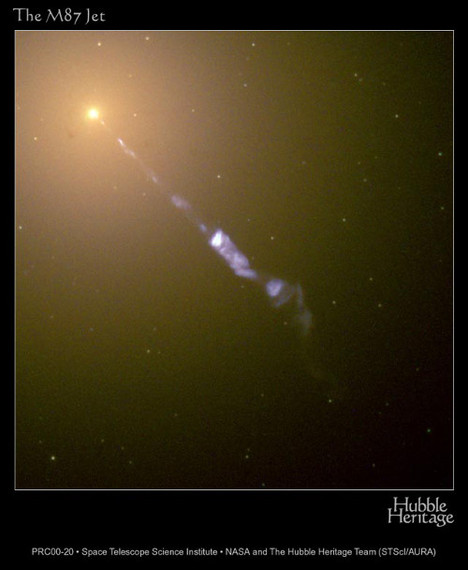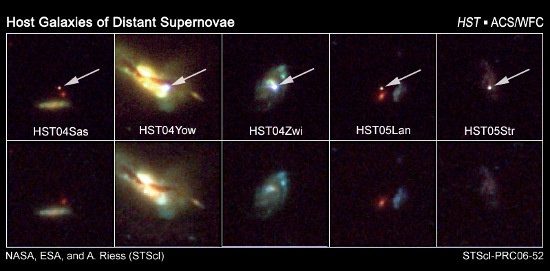
On April 24, the Hubble Space Telescope will celebrate 25 years since its launch. This provides an excellent opportunity to very briefly summarize what I regard as Hubble's greatest scientific achievements. I should emphasize two things: (1) I have used my personal judgment (and biases) in creating this list; other scientists may have different opinions. (2) I do not claim that these are all exclusive Hubble discoveries. By its very nature as an all-purpose telescope, in most cases Hubble helped cement existing suggestions, rather than making singular discoveries. Nevertheless, in all the topics listed below, Hubble's contribution has been crucial.
What do I personally regard as Hubble's "Top 6" scientific achievements? Here is my list:
(1) The discovery that not only is the expansion of our universe not slowing down, it is accelerating! These findings, made through monitoring distant stellar explosions (called Type Ia supernovae: Figure 1), have led (in combination with other measurements) to the realization that a mysterious form of "dark energy" constitutes about 70 percent of the cosmic energy budget.
(2) The mapping of the large-scale, three-dimensional distribution of "dark matter" -- matter that neither emits nor absorbs light, but which forms the scaffolding on which the cosmic structure is constructed.
(3) The determination of the history of the cosmic star-formation rate. This achievement came through a series of deep observations of the universe (Figure 2 shows the "Hubble Ultra-Deep Field 2014").

Figure 2. The Hubble Ultra-Deep Field 2014. Credit: NASA, ESA, H. Teplitz and M. Rafelski (IPAC/Caltech), A. Koekemoer (STScI), R. Windhorst (ASU), Z. Levay (STScI).
(4) The determination of the Hubble constant -- the current rate of cosmic expansion. The uncertainty in the value of this important cosmological parameter has been reduced from a factor of two, to about 3 percent.
(5) The discovery that supermassive black holes reside at the centers of most galaxies, and that the masses of the black holes are tightly correlated with the masses of the stellar bulges that surround them (thus demonstrating that galaxies and their central black holes evolve in tandem). Figure 3 shows the jet emanating from the accretion disk surrounding the central black hole in the galaxy M87.

Figure 3. The optical jet from the center of the galaxy M87. Credit: NASA and the Hubble Heritage Team (STScI/AURA).
Given these spectacular achievements, I cannot wait to see what else Hubble has in store for us in the next five (or possibly more) years. Moreover, we are looking forward to a potentially even more exciting list, to come after Hubble's successor -- the James Webb Space Telescope -- is launched (planned for 2018).
